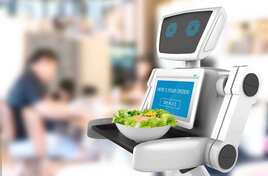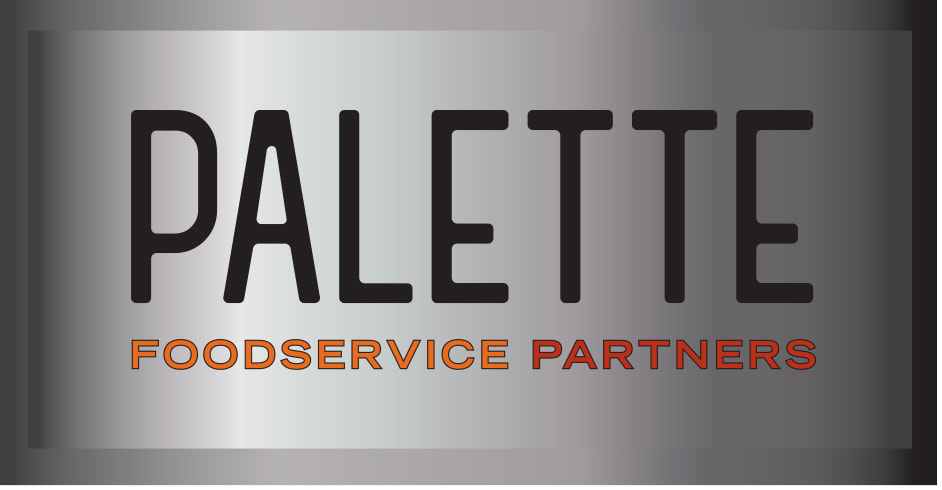 Whether it’s finding suitable candidates or dealing with no-shows, acquiring new staff can be an ongoing headache for restaurant operators. But tech is helping to address some of the main pain points and bottlenecks – both for applicant and employer. For example, as a recent Modern Restaurant Management report says, restaurants can make it easy and fast for candidates to register their interest with them using a “quick apply” button where candidates can submit basic information about themselves, which, if accepted, will prompt them to submit a full application. From there, talent acquisition software can make it unnecessary to take the time to schedule candidate interviews – or even conduct them altogether. Candidates can simply answer questions via video recordings instead of during a formal interview. The software can then track the person’s position in the interview process so you both know where they stand. Looking at every step in your hiring process, there is likely a tool to help you automate or streamline it. Are there snags in your process that could be smoothed out with the help of tech tools?  AI can be a useful tool when you’re looking to recruit new staff to your team. It can help you craft a compelling and factual job description quickly and automatically based on the information you provide. What it can’t do so well is communicate the less tangible nuances of your culture: what your team is like, what energizes them, and how people experience working at your restaurant, for example. That requires some human input and oversight. As a recent report from Modern Restaurant Management puts it, the people applying for a job with you should be able to feel “the bustling energy of a fast-paced kitchen, the warmth of a family-owned establishment, or the innovation of a cutting-edge culinary concept.” These are also the kinds of qualities that inspire connection and loyalty among your staff. So what is it about your restaurant’s culture, standards and values that sets your business apart from the restaurant across the street? How can you make sure people feel that when they read your job description – and that this feeling carries over seamlessly when they come through your front door?  Over the past several years, restaurant operators have had to manage a delicate balancing act: Assess and adopt new technology to make business run more efficiently, but do so in a way that engages employees and guests and avoids alienating them. It’s a challenging task to handle when there is often little time in the midst of running a restaurant to sit back and consider the broader picture. As a result, operators may find themselves drowning in too much tech, losing the human touch with guests, and possibly turning off staff who assume they will be replaced by automation. If this sounds familiar, it may be time to reframe your business’s relationship to your tech, emphasizing that it’s not there to take over, but rather to provide a new level of background support that makes it possible for you to provide the best human support you can. A recent report from Modern Restaurant Management provides some suggestions. Think about what you want to provide for your guests – is it friendly service with a personal touch, or do people simply want their food fast so they can get on their way quickly? Build your tech strategy around that. When considering new tech tools or systems, involve your staff in choosing them, giving the people who will be using the tech an opportunity to test it out, ask questions and raise concerns. Then, when training staff on your tech, help them understand the “why” behind it by taking them through each step of the guest journey and demonstrating how the tech supports it.  Amid the rise in tech-driven automation, ordering and payment capabilities in recent years, one question often hovers in the background: Will restaurant jobs be eliminated? While it’s clear that some roles are becoming obsolete in light of these changes, it’s also true that new ones are appearing. Specifically, as restaurants juggle multiple tech-based ordering channels – and vie for guest engagement and sales – they are looking for people who can develop and build upon their digital expertise. Increasingly, large restaurant chains and parent companies of such brands are hiring digital leadership roles – a recent Pymnts report mentions Denny’s and Focus Brands as two examples. Smaller, independent brands are likely adapting too. If you have found ways to outsource restaurant tasks to tech, are there opportunities in your business for key staff to take on new responsibilities in digital management and development?  Could automation be the answer to perennial labor challenges in restaurants? As the opportunities for restaurant automation increase and pressure remains on operators to manage tasks with the support of a smaller-than-ideal staff, it’s natural to ask the question. How you answer it could mean the difference between attracting talented employees and losing them. While it may be tempting to envision running your business without having to worry about an employee calling in sick or forgetting their shift, the human touch is something that guests and restaurants want. Recent research from PYMNTS found that only a small portion of guests enjoy using QR codes (17 percent) and kiosks (18 percent) for ordering instead of menus and counters – and while younger consumers are more interested in these tools, almost 60 percent still enjoy the experience of interacting with waitstaff. Automation can help you make those interactions better by allowing your staff to spend less time on tasks that the guest doesn’t even see. A recent report from Modern Restaurant Management advises operators to focus on hiring talented people and automating inventory management, food preparation and other unseen tasks that support staff but don’t replace their interactions with your guests. Finding the right balance between those parts of your business is where you can deliver the personalized, convenient experiences that will most delight your guests.  Making staff feel appreciated – and more likely to engage with the business and remain on the job – isn’t just about offering tangible rewards. The little things you can do to recognize a job well done, or acknowledge personal milestones like birthdays or work anniversaries, can all help you boost morale and make employees feel like they are making important contributions to the broader team. Harness your employee-facing technology to automate email messages and other alerts so you can trigger these communications as needed without a lot of manual effort.  One of the biggest trends to emerge from the National Restaurant Association Show this year has been the rise of automated tools intended to be used not in place of human labor, but alongside it. This includes such innovations as a stir-fry machine that prompts its human counterpart when it’s time to add ingredients, and a bowl-making, self-cleaning robot that can be used alongside humans in a food prep assembly line to cook and assemble meals. The common thread emerging from these new tools is that they don’t require their users to have culinary skills to prepare a tasty, consistent meal – just the ability to follow instructions. As the technology becomes more widely adopted, it is likely to transform what tasks a restaurant needs staff to manage, how operators train staff, and how much training is even required to get new employees up and running.  Perhaps you have a shift in your restaurant that no staff want to work – a major holiday approaching, a long weekend, or a particular day of the week when you anticipate higher guest traffic and want to have sufficient staff on hand to accommodate it. If you offered surge pricing around that shift, would it change your employees’ minds? Much like how operators are using surge pricing on digital menus to boost profits when guest traffic is high, they can also use workforce management tech to make less-appealing shifts more profitable (and therefore more desirable) for employees. If that tech can also help employees get paid automatically following a shift, even better. As you compete for staff and try to retain your best people, the technology you use to make their experience with you smoother and more profitable can mean the difference between attracting and keeping a new employee and losing that person to the restaurant across the street. What improvements could you make?  The National Restaurant Association estimates that the average restaurant loses $150,000 annually in staff turnover. Further, 70 percent of operators are struggling to hire new staff, so it’s crucial for operators to improve employee recruitment and retention – and to find ways to do it that look different from what they have tried before. Research shared during a recent webinar from Nation’s Restaurant News indicated that restaurant operators are making a number of labor-specific investments in technology in a direct effort to boost retention by making restaurant jobs feel more like careers. By and large, these changes are not designed to reduce headcount; rather, they are about automating parts of the job that employees aren’t as good at, find tedious, or both. Restaurants can reap significant benefits if they find ways to think long term about transforming restaurant service in ways that maximize the parts of it that staff enjoy most (and make the tougher parts of the job more accessible). According to a report from The Takeout, staff tend to find the relationship-building parts of the job most fulfilling: getting to know repeat customers as friends, discovering what they appreciate about the business, and bonding with them over the ingredients and techniques used across the menu. Do you know what aspects of the job led your staff to you? If it’s simply the chance to earn a paycheck, how can you make the job about more than that? If you can’t delegate any of your most tedious tasks to tech, can you reform your training to make those tasks easier? Where possible, take steps in the right direction – even if you don’t have the budget to invest in tech right now.  While it’s true that more restaurant operators are automating front- and back-of-house processes right now, they are also focusing more on how they can make the most of their staff – and keep the people they have. According to Nation’s Restaurant News Intelligence, this is the top priority for operators. It ranks higher for them than reducing labor costs, as well as streamlining both back- and front-of-house operations. The labor shortage of the past few years has required operators to adopt technology that supports employee retention efforts. That includes taking such steps as digitizing the onboarding and training process, automating scheduling, and adopting labor-enhancing tools to help them deliver quality service (as opposed to bringing in technology designed to replace human labor). This is a beneficial talking point for operators managing staff. Regularly collecting feedback from staff about their pain points can help you identify where technology might help lighten their load and enable them to focus on guest-facing work. It may even help you keep them from moving on to a different job. |
Subscribe to our newsletterArchives
July 2024
Categories
All
|



 RSS Feed
RSS Feed